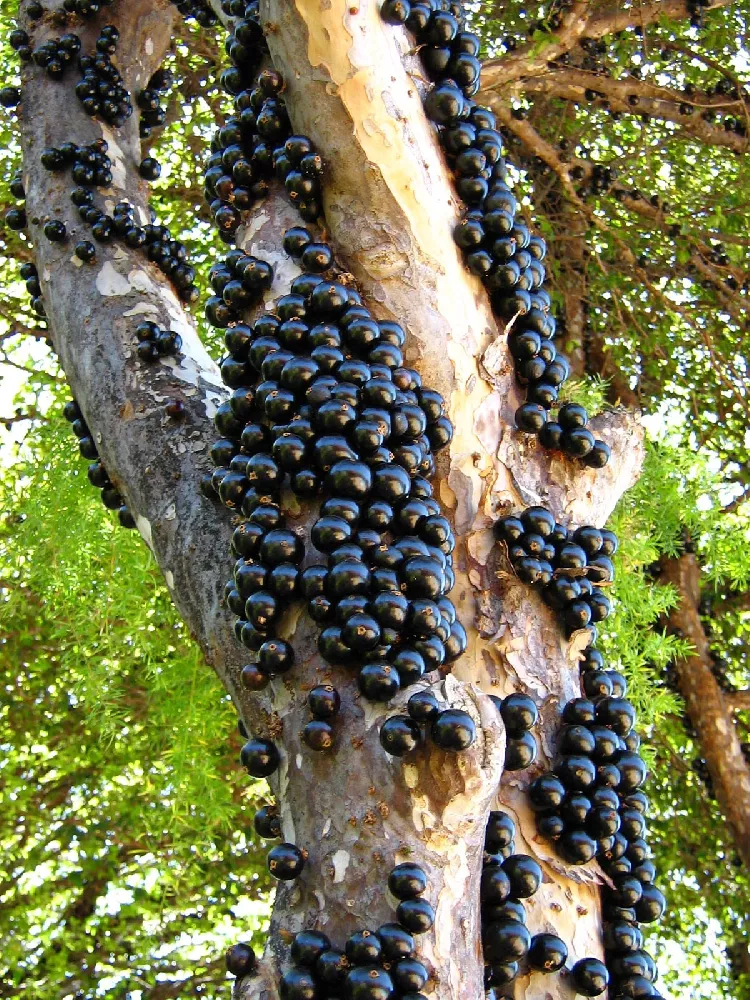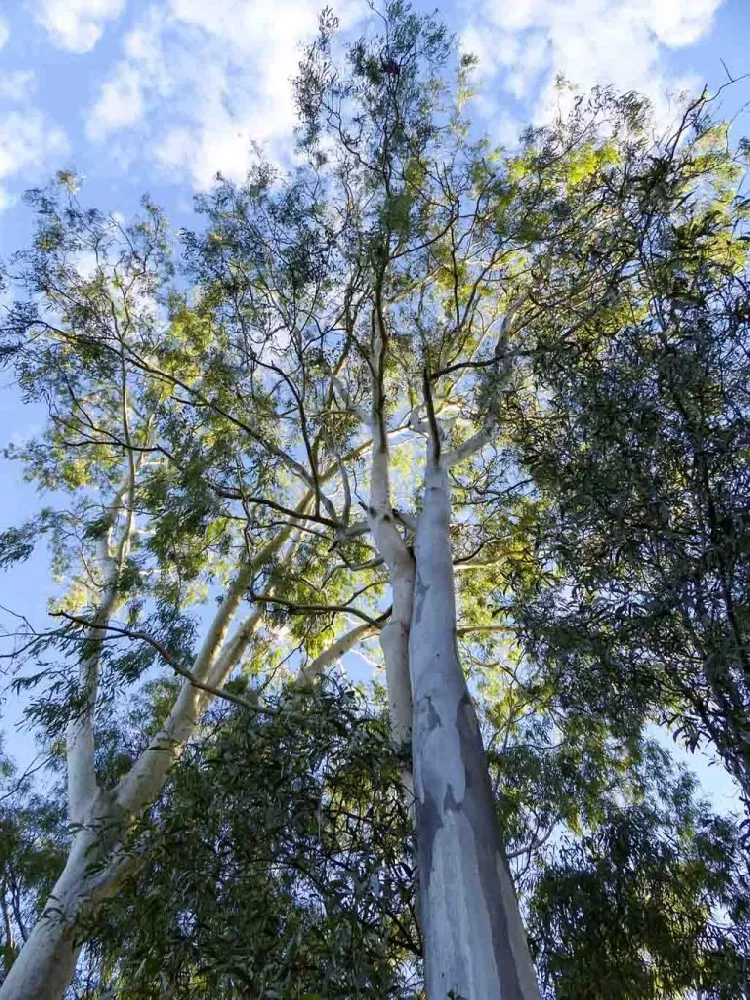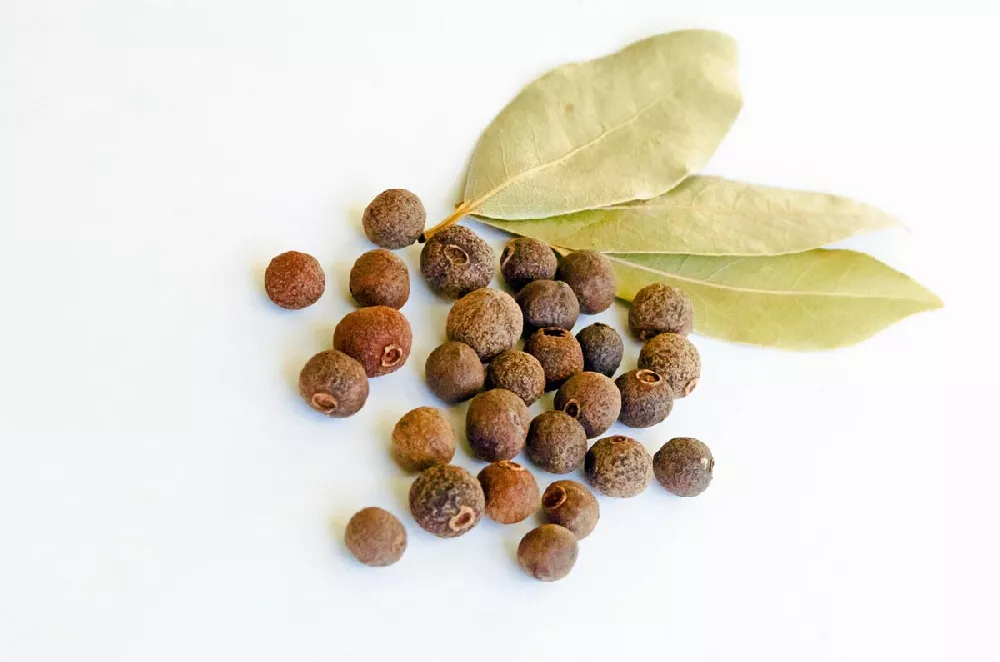- Home >
- Cherry Trees >
- Star Suriname Pitangatuba Cherry Tree
Star Suriname Pitangatuba Cherry Tree for Sale - Buying & Growing Guide
- Ships in 1-2 days
- 1-Year Warranty Eligible
- Pots or accessories are not included unless specified in the product options.
Shipping Details:
Products shipped through FastGrowingTrees.com. Once your order is shipped, you’ll receive an email with a tracking number and estimated delivery date. Most orders will ship immediately.
The name might be a mouthful, but it's worth remembering the star Suriname pitangatuba cherry tree, Eugenia uniflora. This delightful plant offers an attractive silhouette either in the garden or on the patio, and it has the added bonus of producing delicious, juicy "cherries" that can be eaten raw or used in cooking. Because they spoil quickly, it's rare to find star cherry fruits in the grocery store. But you can have your own private supply by planting one or more of these trees, which can also be grown into a shrub-like form. Here are a few more reasons why it's worth growing this tropical tree no matter where you live:
- Its maximum height is a manageable 6 feet, making it a great choice for smaller yards.
- New leaves are dark purple or red, maturing to a glossy dark green.
- This tree provides several crops of fruit a year.
Plant Care
Sunlight

Star cherry trees do best in full sun — six to eight hours of direct light a day.
Watering
Water your tree once a week if soil is dry 2 inches below the surface. Give it about an inch of water at a time.
Fertilizing

Fertilize throughout the growing season with a water-soluble product designed for tropical plants.
Planting and Care
Planting instructions
Choose a site for your star Suriname pitangatuba cherry tree that gets at least six hours of sun a day, with fertile soil that drains well. Unpot your tree and tease out any encircling roots, which can girdle the tree and kill it. Dig a hole that’s a little deeper and twice as wide as the tree’s root ball. Throw in a shovelful or two of well-rotted compost or manure, and place the tree on top. Holding it upright and steady, fill in around it with good-quality topsoil, tamping down as you go to eliminate air pockets. Water thoroughly. Apply a 2- to 3-inch layer of an organic mulch, such as bark chips, around the tree’s root zone to conserve moisture and hinder weeds.
Watering and nutrients
When newly planted, water your star Suriname pitangatuba cherry tree every few days until it’s established, with robust new growth visible on the branches. Generally, the tree needs about 1 inch of water a week, either from rain or supplemental watering. To determine if it’s time to water, check the soil 2 inches down and see if it is dry — if so, water the tree. Fertilize with a balanced, slow-release product throughout the growing season. This can be a formula such as 10-10-10 or a product that’s designed specifically for tropical plants.
Pollination
Star cherry trees are self-fertile, with a single tree having both male and female reproductive parts. Thus, you will be able to harvest fruit even if you have just one tree. Having multiple trees, however, may increase the amount of fruit you get from each tree. Flowers are predominantly pollinated by bees.
Pruning
Prune your tree at any time to remove broken, diseased, or damaged limbs, cutting them back to healthy wood. You may also prune to shape the tree and open up the canopy to light and air, but do not cut out more than a third of the tree’s branches each year. The best time to prune is after the tree has finished flowering.
Pests and diseases
Star cherry trees have few natural pests or diseases. Various beetle species may be attracted to the fruit, but a healthy tree should be able to fend off infestations. Scale insects and aphids may appear on container-grown trees. As a last resort, neem oil may be used to repel insects. Diseases that may impact your star Suriname pitangatuba cherry include root rot and leaf spot. These fungal diseases can be prevented by keeping the area around the base of the tree free of dead leaves and other debris and avoiding overwatering.
Harvesting
Star cherry trees flower and fruit throughout the year, depending on your climate, so you may get more than one harvest, although spring and summer are when you’ll see the most fruit. The fruits are ready when they turn a bright red and pull off the tree easily. They do not last long after picking; you’ll want to either eat them, use them in cooking, or freeze them for future use within several days of picking.
Achieving maximum results
In most of the U.S., the star Suriname pitangatuba cherry tree should be grown in a container that may be brought inside when the weather goes below 20 degrees Fahrenheit. Choose a container for your tree that is roughly twice the size of the root ball and has good drainage, and plant it in good-quality potting soil as per our directions above. Place in a sunny spot on your patio or in your backyard. When bringing it inside, it should be placed near your sunniest window. Monitor the plant’s water needs carefully; container-grown plants tend to dry out more quickly than those planted outside. Occasionally wipe down the leaves with a damp cloth to keep dust at a minimum and deter insects.
FAQs
Where can I grow my star cherry tree outside?
The Suriname pitangatuba star cherry tree grows well outside in USDA hardiness zones 8 to 11. This includes much of coastal California and the Pacific Northwest, parts of Texas, and southern states including Louisiana and Florida. In zones 7 and below, the star cherry tree is easily grown in a container that is kept outside through the warmer months and brought into the house in winter.
What can I make with star cherry fruits?
Star cherries taste somewhat similar to apricots or passion fruit, and they can be used in any recipe calling for these fruits. They make excellent jam or jelly, are a great topping on ice cream or cheesecake, and work well in smoothies. You can also try your hand at a star cherry pie or cobbler.
My star cherry tree had lots of flowers but few fruit. What happened?
There are a few possibilities. First is the fact that star Suriname pitangatuba cherry trees have a notoriously low rate of fruit set, sometimes converting only 15% to 20% of flowers into fruit. Another possibility is poor drainage. If you see water puddling around the base of your tree, it may lead to root rot and can also impact fruit set. Avoid overwatering your plants and improve drainage to help your tree's overall health.
Compare Similar Products
You can't add more Product Name - Product size to the cart.
OK










